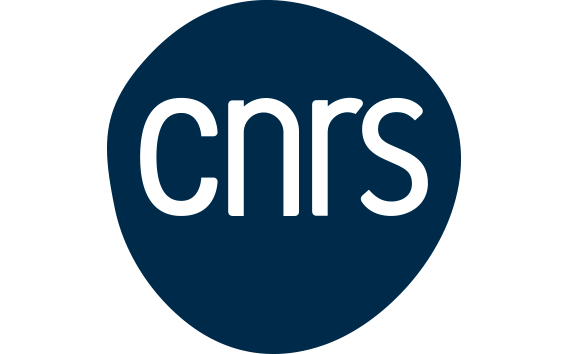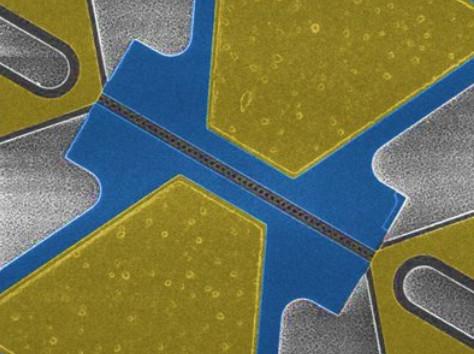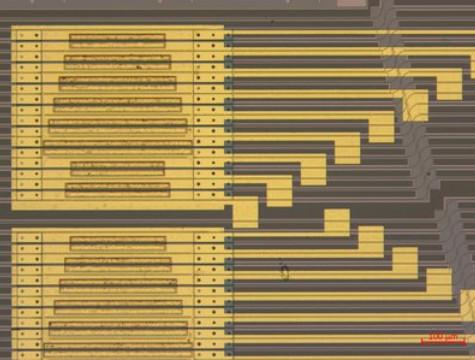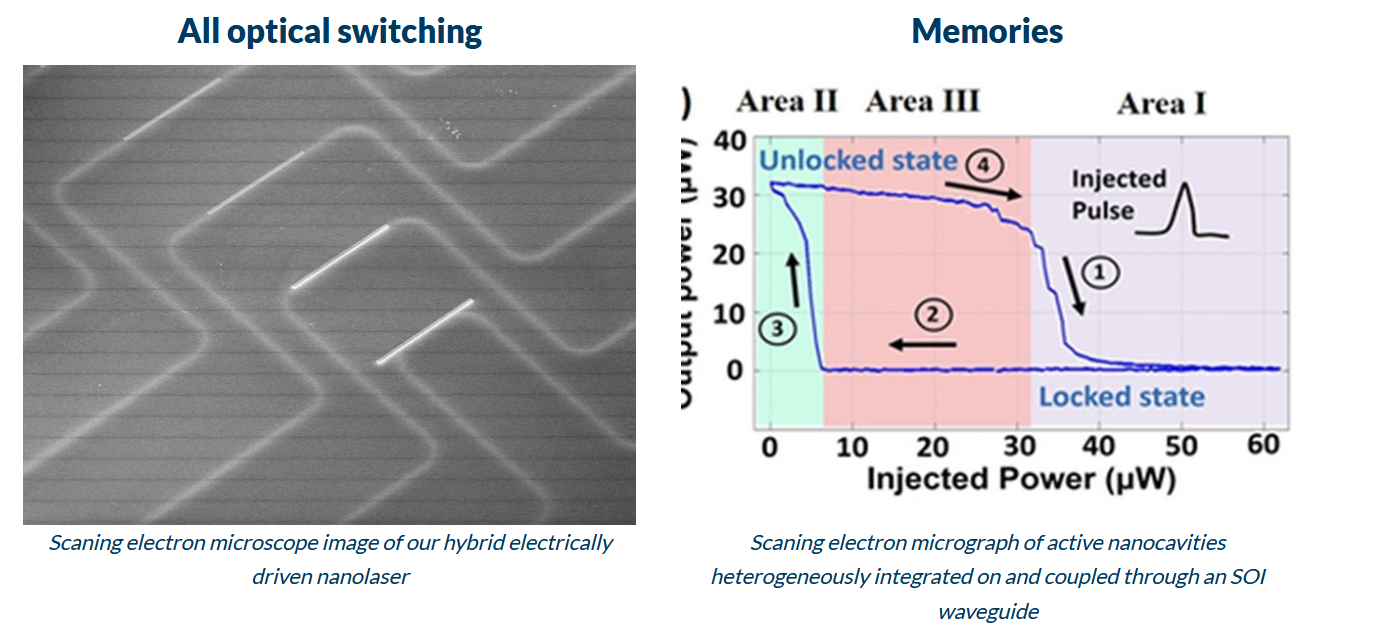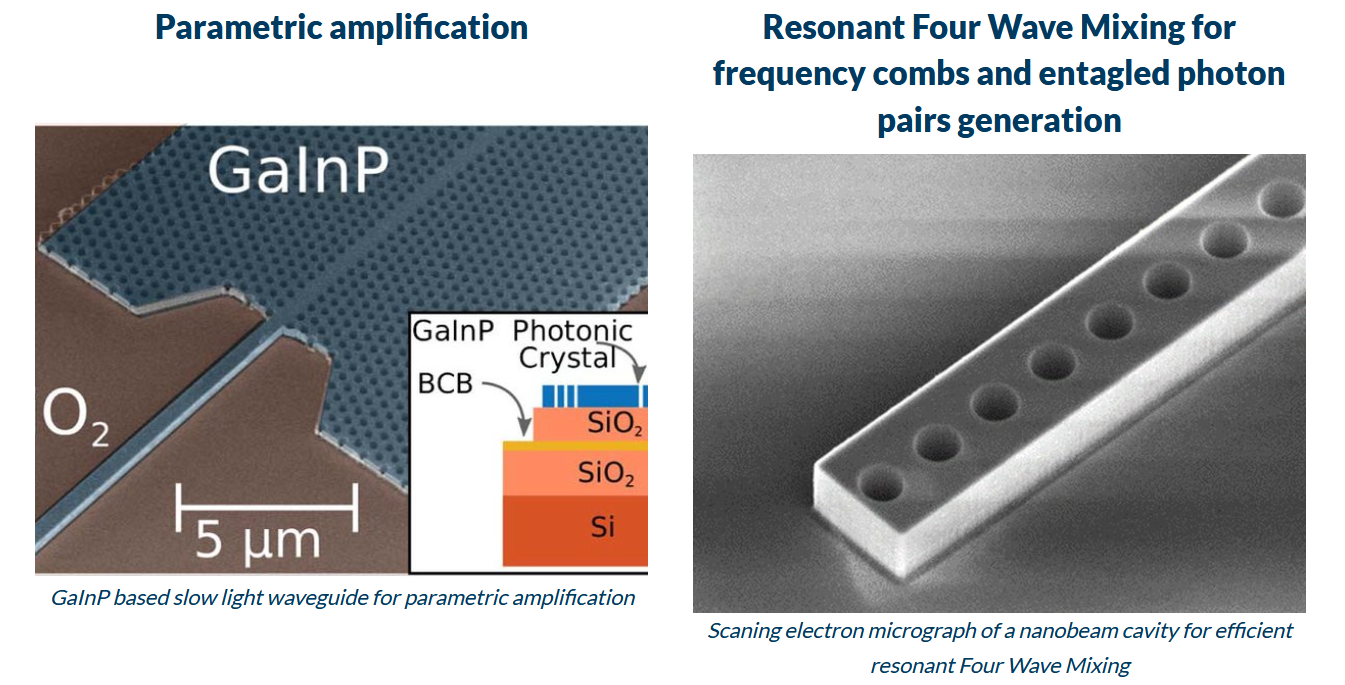- NANO-OPTOELECTRONIC DEVICES
-
The all-pervading development of photonics in the last decades is intimately linked to the advent of the society of information and communication and to the stupendous growth in world data transfer. As a necessary evolution, attention is now directed to optical datacom and computercom which concern data links down to the mm scale. For these, the issues to tackle are the dispatching and sorting of a mind boggling amount of information. The very nature of optics offers the potential to obtain the required high data transmission and processing rates with low power consumption. The use of Silicon photonics has been clearly identified in all roadmaps as a means to achieve the most awaited convergence of microelectronics and photonics on a chip by overcoming electrical interconnect limitations in bandwidth and power efficiency. However to implement this paradigm change, it is crucial to meet up with the exigencies for the performance of the optoelectronic devices which are extremely high.
Novel directions in this domain are of paramount importance to solve this problem. Nanophotonics with its capacity to provide ultimate light-matter interaction will surely be at the centre of the solution. However, in nanophotonics, bridging the gap between fundamental studies and real life device implementation is a formidable task. This is exactly our ambition.
For the last years, our team has been concentrating its efforts on expoiting the unique optical properties of photonic crystals structures. We have been employing these emblematic wavelength-scale strutures to achieve:
Inp Nanolasers
Involved People: Francesco MANEGATTI (PhD), Dimitris FITSIOS (Postdoc), Fabrice RAINERI (PI)InPnanolasers
Atomic-like phenomena for smart lasers
Involved People: Quentin Chateiller (PhD), Fabrice RAINERI (PI)
atomiclike
NANO-AMPLIFIERS
Involved People: Francesco Manegatti (PhD), Dimitris FITSIOS (Postdoc), Fabrice RAINERI (PI)
nanoampli - NONLINEAR NANOPHOTONIC DEVICES: ALL-OPTICAL SWITCHING AND MEMORIES
-
Involved People: Lea CONSTANS (PhD), Francesco MANEGATTI (PhD), Dimitris FITSIOS (Postdoc), Fabrice RAINERI (PI)
Future developments in optical networks will rely crucially on all-optical processing. All-optical processing is based on optical nonlinear effects where an optical signal impacts on the propagation of another one through their interaction with the matter. One of the advantages of all-optical devices over opto-electronic ones is their inherent potential to provide higher bandwidth for high speed data transmission and treatment.
Recently, the drive towards the miniaturisation and the energy efficiency of such devices motivated important efforts in research especially in the nanophotonics domain. Our team aims at developping innovative nonlinear devices based on III-V/Silicon hybrid nanostructures which take advantage of the large dynamic nonlinearities of quantum-confined III-V active materials (quantum well or quantum dots) embedded in photonic crystal nanocavities. Currently, our interest lies in:
switching Collaborators:
Alfredo De Rossi and Sylvain Combrié (Thales Research and Technologies)
Theoni Alexoudi and Nikos Pleros (Aristotle University of Thessaloniki) - PARAMETRIC NONLINEAR NANOPHOTONICS
-
Involved People: Gabriel MARTY (PhD), Fabrice RAINERI (PI)
We endeavour to tap the properties of semiconductor nanostructures such as photonic crystals for nonlinear optics, especially for second and third order nonlinear effects at telecom wavelengths. Nonlinear optics in nanostructures have grabbed, for quite some time, the attention of many researchers as the structuring of the matter at the wavelength scale promises the achievement of particularly efficient nonlinear processes with reasonable optical powers. This opens up a vast panoply of devices and functionalities such as frequency doublers, parametric amplifier, frequency combs or entangled photon sources, which may be integrated into a photonic circuit. Our current interests in the domain lie in:
parametric Collaborators:
Alfredo De Rossi and Sylvain Combrié (Thales Research and Technologies)
Bart Kuyken and Gunther Roelkens (Ghent University)
François Leo and Simon-Pierre Gorza (Université libre de Bruxelles)

Inphyni EN

